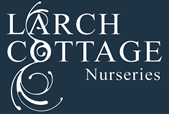Advice
Planting and Growing Fruit Trees in the UK
When is the best time to plant fruit trees?
- The best time to plant a container grown tree is from mid august to the end of May
- It is possible to plant in the summer – June and July, but watering is essential – at least a bucket a week.
- Bare root trees should be planted from late October to March
How do I plant container grown fruit trees?
- Before planting make sure that the tree is well watered. When winter planting a deciduous tree, knock off as much of the compost from the root ball and mix this with the soil before back filling. However if the tree is in leaf, then remain the majority of the root ball impact.
Planting a tree into the lawn.
- Mark out the diameter of the hole and remove the turf. Dig to a depth that allows the tree to be planted at the same soil level.
- Break up the soil at the bottom of the hole to a fine tilth adding in some tree planting compost or well rotted garden compost, mixing this with the soil that has been removed.
Should I stake fruit trees?
- Stakes should not exceed 4ft in height and should be fairly sturdy. Knock the stake into the prepared hole, just off centre on the western side.
- Plant the tree and back fill, firming around with feet. Using a good quality tie attach the tree to the top of the stake, making sure that there is room for growth. This should be checked at least once a year and can probably be removed after 3
- Apply a mulch of bark or well rotted manure.
- It is very important that the planting area is kept free of grass tree does not have to compete for moisture in the first yearm and that the tree is not allowed to dry out.
Why do you graft fruit tree?
- Many fruit trees are grafted, this involves attaching the stump of one tree which has an existing healthy root system to another which is recommended for fruit growing. The idea behind this is to create a strong tree which will be quick to establish and take on the features of the rootstock itself.
- Fruit trees that grow naturally can reach heights of around 15 ft or more. Obviously this would make the job of harvesting the fruit difficult as well as being too large for most gardens. The grafting of fruit trees onto the rootstock of a species with a much more compact habit overcomes this problem. It also improves disease resistance.
How can I tell if my fruit tree has been grafted?
- The join appears as a bulge or kink a few inches from the bottom of the stem where the wood has knitted together.
- One great advantage of dwarf rootstocks is that they have no influence upon the size of fruit itself, so a dwarf patio fruit tree will produce the same sized fruits as a large orchard sized tree.
Do I need to buy another tree for pollination?
- If a variety is ‘self- fertile’ then you will not need a pollinator
- For varieties not labelled as ‘self-fertile’, then you will require a partner which has to be a different variety of the same fruit species Two trees of the same variety will not pollinate each other.
- If you live in town or an urban environment then it is more than likely that there will be compatible apple trees or crab apple trees in neighbours gardens and hedgerows.
- Pears, plums, and cherries are a bit less widely-planted though so it may be that you will need a pollinator of your own.
- If you are in an isolated area and only want to plant one tree and require fruit then you need to buy a self pollinator.
Old Cumbrian Varieties
Malus ‘Carlisle Codlin’ MM106:
A local cooking apple dating back to Carlisle in 1830. Cooks to a white juicy puree with a tart, fruity flavour. Pick Sept. Flowering group 2. Semi vigorous rootstock: Ht 3.5-4 metres in 10 years.
Malus ‘Keswick Codling’ MM106 HST:
An excellent variety well suited to our area. Pale green/ yellow fruits with darker yellow flush. Cooks to a juicy cream froth and puree which hardly needs sugar. Good for jelly. Very profuse in flower and very heavy crops- dual purpose. Pick fruits Aug, keeps until Oct. Rootstock MM106, semi vigorous. Ht 3.5-4 metres in 10 years.
Prunus ‘The Westmorland Damson’:
Westmorland damsons grow mainly in and around the Lyth and Winster Valleys, south west of Kendal. In April the orchards and hedgerows become snow white with blossom- a wonderful sight to see. Fruit ripens, Sept. The flavour is said to be second to none. Self fertile but better cropping in groups.
Click here to see our advice on Step over apple trees
Or here for When to prune apples
If you are wondering what rootstock you should look for then read our guide – Rootstock Explained

